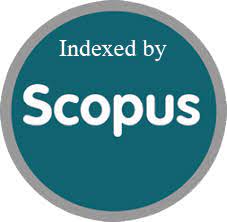The Intertwined Future: Unveiling the Co-Evolutionary Trajectories of Humans and AI
Keywords:
Human-AI Collaboration, Human-AI Partnership, Co-evolution, Artificial Intelligence, Collaborative Intelligence, Augmented Intelligence, Human-Computer Interaction, AI Ethics, Future of Work, Technological Evolution, Machine Learning, Deep Learning, AI DevAbstract
This paper delves into the rapidly expanding area of human-artificial intelligence (AI) collaborations, investigating how these partnerships can lead to mutual development and advancement. We move beyond simply viewing AI as a utility, instead exploring the intricate relationship where both humans and AI influence each other's growth and abilities. Our analysis covers various fields already experiencing this synergy, such as scientific breakthroughs, artistic endeavors, and the resolution of complex challenges.
The study examines the practical ways humans and AI can work together effectively, looking at key elements like communication methods, mutual comprehension, and the building of trust. We also address the ethical and societal ramifications of this shared evolution, acknowledging potential difficulties and exploring approaches for responsible development.
Ultimately, this paper posits that human-AI partnerships offer a significant avenue for fostering innovation and tackling intricate global issues. However, realizing these potential demands careful consideration of the dynamic interplay involved and proactive engagement with the ethical questions that arise. We conclude by suggesting future research avenues focused on maximizing the advantages and minimizing the risks of this transformative collaboration.
Downloads
Metrics
References
Acemoglu, D., & Restrepo, P. (2018). AI, Automation, and the Economy. Review of Economics.
Bostrom, N. (2014). Superintelligence: Paths, Dangers, Strategies. Oxford University Press.
Bryson, J. J. (2010). The Ethics of Artificial Intelligence. MIT Press.
Frey, C. B., & Osborne, M. A. (2013). The Future of Employment: How Susceptible Are Jobs to Computerization? Oxford Martin School.
Kurzweil, R. (2005). The Singularity is Near: When Humans Transcend Biology. Viking Adult.
Russell, S., & Norvig, P. (2016). Artificial Intelligence: A Modern Approach (3rd ed.). Pearson Education.
Tegmark, M. (2017). Life 3.0: Being Human in the Age of Artificial Intelligence. Alfred A. Knopf.
Brynjolfsson, E., & McAfee, A. (2014, January). The AI Revolution: The Road Ahead. Harvard Business Review.
Floridi, L. (2014). The Fourth Revolution: How the Infosphere is Reshaping Human Reality. Oxford University Press.
Harari, Y. N. (2016). Homo Deus: A Brief History of Tomorrow. HarperCollins Publishers.
Jonas, H. (1985). The Imperative of Responsibility: In Search of an Ethics for the Technological Age. University of Chicago Press.
Shneiderman, B. (2016). Designing for Usability: The Principles of Human-Computer Interaction. Pearson Education.
Webb, M. (2019). Why We Sleep: Unlocking the Power of Sleep and Dreams. Scribner
Downloads
Published
How to Cite
Issue
Section
License

This work is licensed under a Creative Commons Attribution 4.0 International License.
You are free to:
- Share — copy and redistribute the material in any medium or format
- Adapt — remix, transform, and build upon the material for any purpose, even commercially.
Terms:
- Attribution — You must give appropriate credit, provide a link to the license, and indicate if changes were made. You may do so in any reasonable manner, but not in any way that suggests the licensor endorses you or your use.
- No additional restrictions — You may not apply legal terms or technological measures that legally restrict others from doing anything the license permits.






